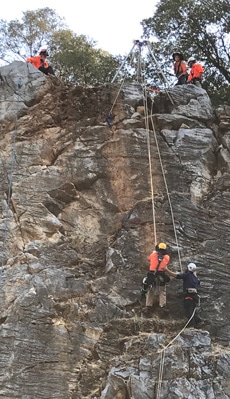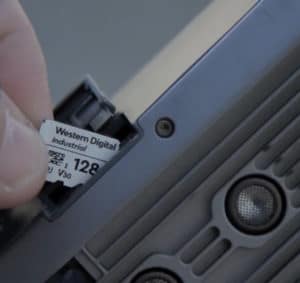First things, first: I’m a proud member of the El Dorado County Search and Rescue (EDSAR) organization and have been for over 3 years. Our team is made up entirely of volunteers – currently at over 100 and counting – whose sole mission is to provide rescue services to residents and visitors of El Dorado County in northern California. The EDSAR team trains constantly and professionally to be ready when our services are needed. People needing our help might include:
- A missing hiker wandering off a mountain trail.
- An injured skier or snowboarder stuck on a slope in backcountry.
- A struggling swimmer swept away by a local stream, river or lake.
- A stranded climber dangling from a mountain face.
As well as being volunteers, we also either purchase or fundraise for all our equipment. This is why earlier this year I proposed that Western Digital donate a drone equipped with a 4K camera to EDSAR and outfit it with an industrial microSD™ card that search volunteers may take out in all types of temperatures and terrain. Drones are one of the edge devices that we enable with our industrial microSD cards, making this a perfect project. Drones will help EDSAR find victims faster, adequately resource recovery operations, and improve aid rendered to victims made possible by providing reliable data storage in challenging environments.
Finding a Safer Approach to Dangerous Mountain Rescues

Within EDSAR, there is a specialized division known as the Mountain Rescue and Technical Ropes team. This team has the charter to find, render aid to, and evacuate victims from steep mountains. These rescues often require extensive use of ropes, sleds, anchors and other staging equipment, and might be carried out in adverse weather conditions.
One of the biggest challenges for the technical ropes team is in the search and evaluation of people in need. With such extreme drop-offs from hills or mountains, the condition and location of a victim might not be clear and evaluating a rescue strategy ahead of time can be quite difficult. Volunteers will often inspect each scenario by going over the edge of a mountain and adjust their approach as the rescue mission unfolds.
Industrial-Grade Storage that Stands Up to Mother Nature

Using a drone could help expedite the rescue mission. The 4K camera on the drone captures clear images of the rescue situation in real-time and the video can be stored for future analysis and training. Western Digital’s industrial-grade microSD card was the right choice to support a large amount of data generated from the 4K video and operate reliably in the different environmental factors that EDSAR operates in.
Search and Rescue Drones Fly into the Future
Drone operations are relatively new to search and rescue. The goal of this project is to help ESDAR find people in need of mountain rescues faster, provide insights into the resources needed to carry out the task, and improve the medical care provided to victims after their rescue. Drone operations may even enable other aspects of a rescue, such as a helicopter that may be called in to assist in an evacuation. Footage from the drone and 4K camera could help inform the right equipment to bring on the aircraft even before the technical ropes team reaches the victim.
As the EDSAR team advances in their drone operations, I feel excited about what the future of search and rescue operations hold. This four-armed, flying machine can fly over cliffs, mountain edges, valleys, and other perilous areas to map the location of victims, update their status to potential rescuers, and determine a safe path to send volunteers on their mission. For such a tiny device, search and rescue drones could have a big impact by helping transport victims to safety more quickly — potentially saving lives in the process.

Learn More
Read our newest whitepaper to learn how the El Dorado County Search and Rescue team is using drones with high-performance and high-capacity storage to make a difference in life-threating emergencies.
